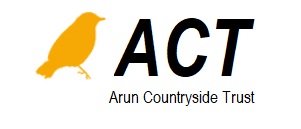The 3-minute-limit speech below was made by Camilla Lambert, Chair of Arun Countryside Trust (incorporating MAVES), to an emergency meeting of the South Downs National Park Authority concerning Highways England's decision to choose Arundel Bypass Option 5A as 'Preferred Route'.
Today I am speaking as Chair of the newly formed charity –the Arun Countryside Trust, (Charitable Incorporated Organisation).A new charity, but building on years of commitment to work for the conservation of an area including a valuable section of the National Park, and the countryside around its edges in the Arun Valley.
The purposes of the charity clearly show why it is so important for us to work in partnership with the SDNP and help in whatever way to maintain the ‘special qualities" of the SDNP which include ‘ rich variety of wildlife, tranquil and unspoilt places’.
Our prime aims are to promote
THE CONSERVATION, PROTECTION AND IMPROVEMENT OF THE NATURAL ENVIRONMENT AND ITS BIOLOGICAL DIVERSITY IN THE PARISHES OF WALBERTON AND ARUNDEL AND MORE GENERALLY IN THE DISTRICT OF ARUN
We see the 5A option, Highways England’s preferred route for an A27 bypass of Arundel, as potentially very damaging to the whole area it traverses- ie Binsted, Tortington, and the Arun Valley south of Arundel, running as it does through the SDNP, destroying an area of peace and tranquillity which has been able to retain a high level of biodiversity because it has been virtually untouched by road traffic, and valued for these qualities by many people who come for rejuvenation, or simply to experience remoteness.
We are concerned too for the countryside’s communities and cultural heritage, the human environment through time.
For now I will remind you briefly of the work of MAVES ( Mid Arun Valley Environmental Survey), out of which, along with several other local bodies, the Arun Countryside Trust has emerged. Critically, the evidence from MAVES surveys, carried out to very high standards over the last 2-3 years, was not used or communicated to respondents in the 2017 Consultation.
Some key points are:
- Over 6ha of ancient woodland will be destroyed along with species rich broadleaf woods which don’t have the same protection as Ancient Woodland.
- There are 14 species of bats including 3 rare bats: Bechstein and barbestelle and alcothoe which puts us on a par with Ebernoe Common; dormice are also present, along with a wide variety of invertibrates
- The hedges and shaws are vital corridors for the wildlife to move across the landscape - their severance will cause local extinction of species
Those of us involved with the ACT live in a very special area, and we look to the National Park as a planning authority to carry out its duties of protection. We are not just concerned about our own habitat in the Arun Valley but are also mindful of the wider context – especially changes taking place in car use and in work, and the public health challenges created by traffic generated pollution.
We hope members will bear these in mind too when considering a robust reaction to the preferred route. .But most of all we hope the SDNP will stand firm in opposition to the route, wary of any further attacks in future that may well come from proposed developments destructive of the special qualities of National Parks, and of any precedents that accepting such developments in this area may create.
The speeches from the public included individuals and representatives of organisations friendly to the Arun countryside such as Sussex Wildlife Trust's Tony Whitbread (who is also one of our ACT Trustees), CPRESussex, ArundelSCATE, and ABNC.
We are pleased to report that the National Park Authority decided, following this demonstration of support, to challenge Highways England's decision with an application for Judicial Review.
